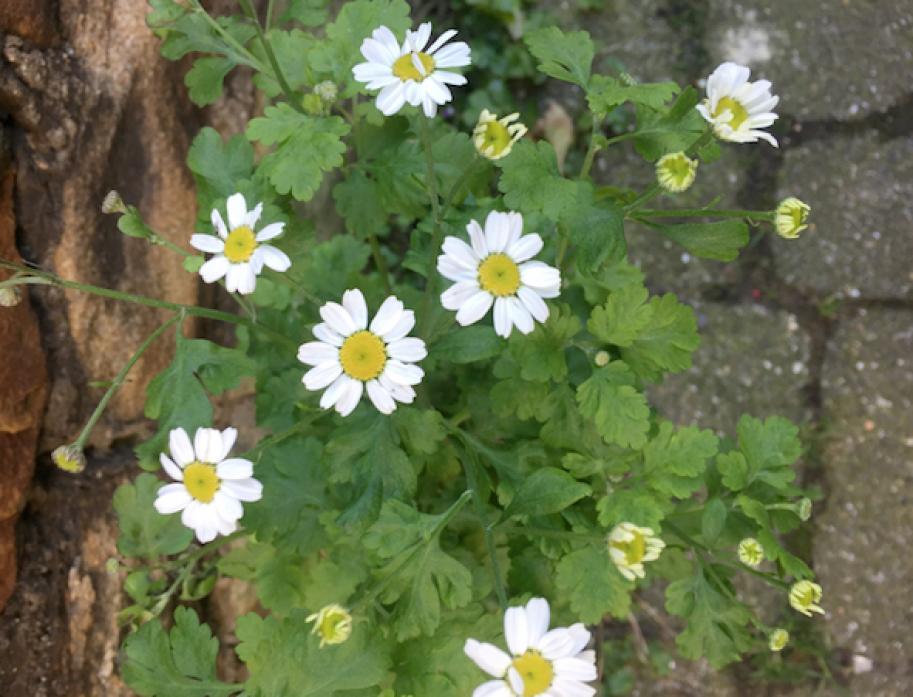
Feverfew – Tanacetum parthenium (Bachelors’ Buttons)
FEVERFEW is not native to the UK. It originates in Europe, indeed as far east as the Caucasus. However, its occurrence in Anglo-Saxon England was documented even in writings before the Norman Conquest. This suggests that the plant was brought here by travellers aware of its herbal and medicinal qualities.
It is a pretty plant of the daisy family. It has white flowers with yellow centres, and is commonly found on walls, in waste places and hedgerows.
We see it all over the UK, but it is rare in Ireland and the northern Scottish Isles. It has also become naturalised in both North and South America.
Cultivated garden varieties include those with golden yellow leaves, and plants with double flowers which we call Bachelors’ Buttons.
But it is for its medicinal properties that the plant is best known. There is a reference to febrefugia (meaning to drive away the fevers) from as far back as the year 1000. And a 1560 herbal quoted: “feuerfew is better for weomen”.
Culpeper, in his 1653 Herbal, calls it featherfew – possibly because of its very shredded looking leaves.
He comments on its strong smell and bitter taste, and recommends it for many things, including “swimming or giddiness of the head” and “an especial remedy for too liberal use of opium”.
Interestingly, he also describes it as predominately a garden plant only occasionally found wild, suggesting that it was not nearly as widespread as it is now.
Its proven effectiveness is for migraine sufferers.
In the 1970s, a newspaper story described a woman who had successfully rid herself of migraines by chewing a leaf of feverfew every day.
Studies at the London Migraine Clinic followed and showed that 70 per cent of sufferers who chewed a leaf a day for three months enjoyed some relief.
More scientific studies followed and eventually the active chemical was isolated and named as parthenolide (which is technically termed a sesquiterpene lactoid) and also has anti-cancer properties.
If you suffer from migraines, there’s no longer any need to go scrabbling around wastelands for plants to mash at home.
There are feverfew preparations – from teas through tablets – in pharmacists and herbalists.
But for determined foragers, although it’s generally claimed that flowering time is June and July, this photograph was taken in Waterloo Yard in Barnard Castle, in November.
Richard Warren is a botanist from Barnard Castle





